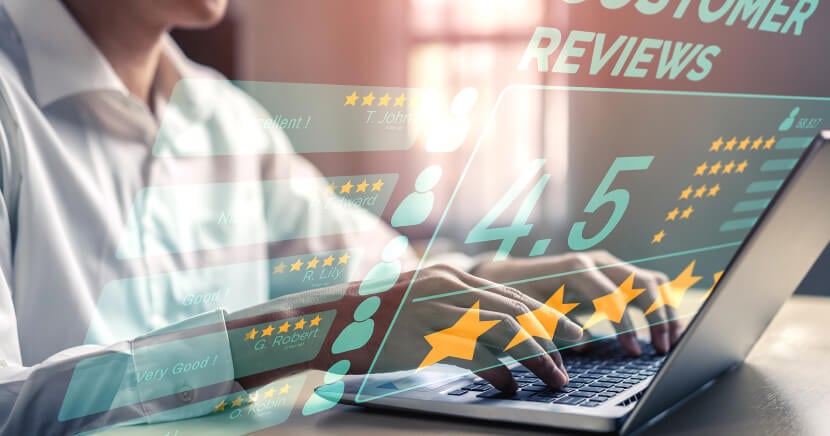ADR, RevPAR, GOPPAR — these acronyms represent important metrics to hotels.
They help provide a clear picture into how much revenue and profit the hotel is making and how income varies across seasons or big events. With this information in hand, hotel managers can better compare their property’s performance against industry standards, and determine whether they need to improve their posture and raise the value of their property.
When it comes to increasing the value of a stay at your hotel, the biggest thing you can do is focus on improving the overall quality of your guest experience. At the end of the day, guests expect to get what they pay for — and they’re far more willing to open their purse strings if they feel that their needs are being met, or exceeded. Another way to drive up value is to reduce the time and money spent on running and maintaining the hotel. With smart technology and proactive maintenance, for example, you can avoid spending inordinate amounts of funds on repairs.
To help you do the most you can to increase the value of your rooms, this article explores three important financial metrics and gives three tips to drive up those numbers.
See also:
- Sustainability in hospitality is good business
- How hotels can streamline delivery of information and updates
-
A look at how hotel guest demographics are shifting — and what millennials want
Breaking down the acronyms
First and foremost, let’s take a look at the different revenue and profit metrics you want to be monitoring as a hotel leader.
Average daily rate (ADR)
Also known as the average room rate, ADR measures the average price paid per room in a specific time period. This is particularly important if you want to compare your property against similarly sized competitors in your area, or if you want to contrast how your hotel performs in one season versus another.
To calculate your ADR, you divide total room revenue by the number of rooms sold during that period. For example, if you have a revenue of $15,000 and you sold 100 rooms, your ADR would be $150.
The one thing to consider as you calculate your ADR is that you can only include the rooms that are available to guests. As such you can’t count rooms that are occupied by staff members or by guests with a complimentary package.
Revenue per available room (RevPAR)
The RevPAR metric measures a property's ability to fill its available rooms at an average rate. This is slightly different from ADR as it better connects the dots between your average room rate and occupancy. For example, an increase in RevPAR means that either the room rate or the occupancy is improving.
To calculate RevPAR, you divide the total revenue generated by hotel rooms in a specific time period (e.g. day or month), by the number of available rooms in that time period. So if you made $30,000 across your 100 rooms in a month — even if you only filled 90 of them — your RevPAR would be $300.
Note: As you do this calculation, make sure you don’t include revenue from the hotel bar or spa.
Gross operating profit per available room (GOPPAR)
One step further from RevPAR is GOPPAR. While it’s still based on the number of rooms available, this metric takes into account all sources of revenue — and all expenses.
To calculate your GOPPAR, you take your gross operating profit (all revenue minus all expenses) and then divide that by the number of rooms. The primary value of this metric is that it gives you the bigger picture of how your hotel is performing overall, rather than just focusing on one segment.
It’s important to note that neither of these metrics should be used in isolation. So, as you take a look at how your hotel is doing from a financial standpoint, make sure you have more than one source of information to support any decisions you make.
Three tips for optimizing your hotel’s financial performance
Now that you have a baseline of how your hotel is performing, there’s a lot that you can do to improve on those financial metrics. To get you started, here are three ways you can streamline your hotel’s operations to keep your hotel budget in check and help drive your revenue and profit — and reduce costs.
Optimize your check-in experience
The check-in process is one of the first opportunities you have to ensure your guests are satisfied — and it goes way beyond the front desk. For example, you can give guests the option to check in through your hotel’s app and then use their mobile device as the key to their room. When they get to their room, their television set can welcome them with a personalized greeting using the customer data you have on your system. This seemingly small act of autonomy can carry a lot of value for guests that expect to have seamless digital experiences, giving you the opportunity to increase your average rate.
Invest in new amenities
Sometimes, you really do have to spend money to make money. Hotels that listen to their guests and invest in amenities that make sense for their target audience are actually investing in the value of their property. Whether it’s a pool, higher-speed internet, high-tech amenities, or a line-up of live musical performances at your restaurant, these are all things that can increase how much your guests are willing to spend at your property.
Find the right digital partners
As we mentioned before, digital experiences are really important — even for hotels that are focused on creating physical spaces and activities. People want to be connected to the world and to their homes, and with the right platforms, hotels can empower their guests to do just that.
With PressReader, for instance, hospitality leaders can give their guests access to thousands of publications from around the world, so that they don’t lose a beat when they’re away from home. The benefit to the bottom line? Hotels can offer this wealth of content with just one subscription cost. There’s also the added bonus of data-driven insights that tell our partners what their guests like to read — so they can craft messages and plan services that appeal to those same interests.
These are all things that can allow you to increase the price of your hotel rooms. Once you’ve determined how much more you’re willing to charge — and have a forecast for how that might grow revenue and profit — you can calculate how ADR, RevPAR and GOPPAR might grow.
Learn more about how PressReader can help you increase your property’s revenue.






